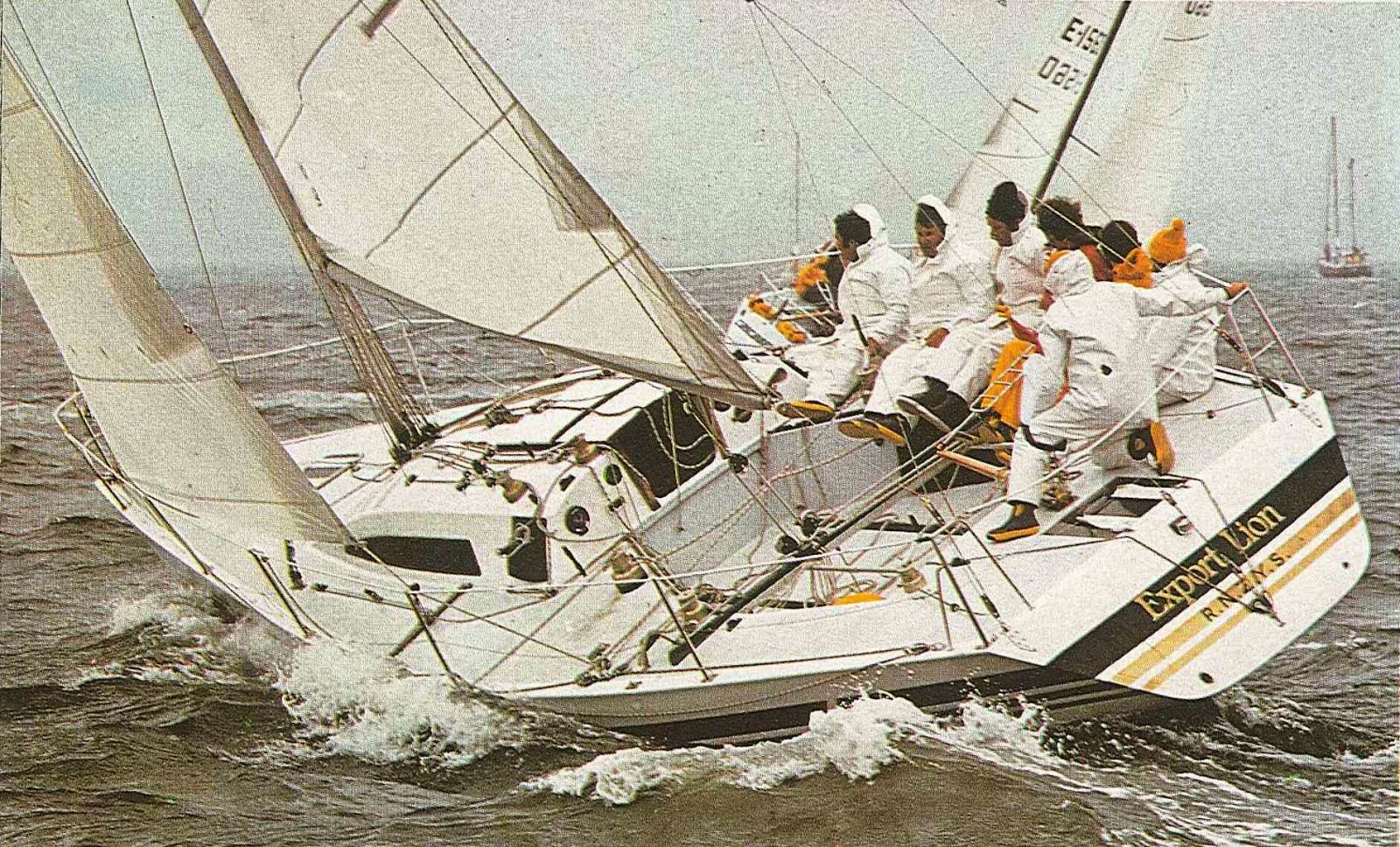 The 1978 One Ton Cup was held in Flensburg, Germany. Stu Brentnall and his crew had won the 1977 series in Auckland aboard their Farr centreboarder The Red Lion, but after the Cup Brentnall sold the champion yacht to an Italian yachtsman. With the sale of other top local One Tonners to overseas owners, including Jenny H, Mr Jumpa and Smir-noff-Agen, it was apparent that New Zealand would struggle to mount a defence of the trophy.
The 1978 One Ton Cup was held in Flensburg, Germany. Stu Brentnall and his crew had won the 1977 series in Auckland aboard their Farr centreboarder The Red Lion, but after the Cup Brentnall sold the champion yacht to an Italian yachtsman. With the sale of other top local One Tonners to overseas owners, including Jenny H, Mr Jumpa and Smir-noff-Agen, it was apparent that New Zealand would struggle to mount a defence of the trophy. Brentnall approached the RNZYS with a proposal to build a new boat for the 1978 series, based largely on the design that was so successful in 1977 but optimised to meet the changes to the IOR. This included several hull and rig alterations aimed to improve performance in the light to moderate conditions expected in the Baltic, being slightly shorter, beamier and lighter and with a bigger rig. A centreboard configuration was opted for rather than a fixed keel, because at the time the design was drawn this still appeared to be a viable proposition.
 |
| Final preparations for the launching of Export Lion, June 1978 (photo Jenny Green/Sea Spray) |
 |
| Export Lion on launching day at Westhaven, Auckland (photo courtesy of Lion Archives) |
 |
| Export Lion on launching day (photograph by Jenny Green/Sea Spray) |
 |
| Export Lion sails downwind along the central Auckland waterfront (photo courtesy Lion Nathan) |
 |
| Export Lion during sailing trials on the Waitemata Harbour |
 |
| Germany's Tilsalg sails upwind during the 1978 One Ton Cup (photo Peter Montgomery/Sea Spray) |
 |
| Germany's Bremen sails downwind alongside Britain's Solent Saracen, another Farr design, in the 1978 One Ton Cup (photo Peter Montgomery/Sea Spray) |
 |
| Export Lion in fresh conditions in Flensburg (photo Facebook) |
 |
| Export Lion |
 |
| Export Lion alongside a German competitor in light airs and amongst an enthusiastic spectator fleet (photo Peter Montgomery) |
 With such a narrow lead, Export Lion took a cautious approach to the start of the last race, the long offshore. But despite hanging back from a biased start line on starboard tack, with sheets eased and waiting for the line to clear, the also-ran Cascabel collided with Export Lion with such force that Export Lion was spun around and was pointing backwards when the gun went. It took some time for the two yachts to disengage, and both were at the back of the fleet at the first mark. Although in a 300 mile race this would not have seemed insurmountable, the mark had heralded the start of the 150 miles of fast downwind sailing, and gave the front runners, sailing at 9 knots, a big advantage over those still trying to get to the first mark at 6 knots.
With such a narrow lead, Export Lion took a cautious approach to the start of the last race, the long offshore. But despite hanging back from a biased start line on starboard tack, with sheets eased and waiting for the line to clear, the also-ran Cascabel collided with Export Lion with such force that Export Lion was spun around and was pointing backwards when the gun went. It took some time for the two yachts to disengage, and both were at the back of the fleet at the first mark. Although in a 300 mile race this would not have seemed insurmountable, the mark had heralded the start of the 150 miles of fast downwind sailing, and gave the front runners, sailing at 9 knots, a big advantage over those still trying to get to the first mark at 6 knots. |
| Export Lion powers along upwind in the 1978 One Ton Cup (photo Peter Montgomery) |
 |
| Tilsalg prepares for a spinnaker set during the 1978 One Ton Cup |
 |
| Tilsalg - winner of the 1978 One Ton Cup (photo Peter Montgomery/Sea Spray) |
 |
| Export Lion trails Heatwave during one of the inshore races during the 1978 One Ton Cup |


Maybe become "No justice" ex GIN: https://www.facebook.com/groups/203537404677541/posts/462621772102435/
ReplyDeleteFantastic half tonners, some of them in molded planks survived in Italy in good condition and others as the Mach in perfect condition at least until I sold it to a seaman racer in La Coruña.
ReplyDelete